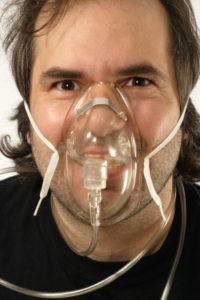 Positive Anger Management Coping: Distraction
Positive Anger Management Coping: Distraction
After you have practiced a couple cycles of breathing you should start feeling better. If you find that you are still upset, distraction is a good technique. The purpose of distraction is to take your mind off of the present topic and to think about something else other than the situation. When you are very angry, if is important to distract yourself from what is going on.
Focus your mind on something else than what is going on right in front of you. Do not think about the problem or ruminate on it–especially at first. Since you are not thinking clearly you will probably get upset and make your situation worse if you do.
Counting is a common tool for distraction. It slows you down and gets you out of your immediate response. That’s why so many people say when you are angry you should count to 10. Counting backwards is harder, which makes you think, which helps you distract from the situation. It also buys you time, which also helps. When I am upset I try to do more advanced math so I have to think about it. I start with the number 100. Then I subtract 7 and work backwards. 100…93…86…and so on. I have to think about these numbers, so it takes my mind off of my situation.
For some people visualization helps. You might try to picture a specific, calm place and focus and think about the details of it. If you are practicing visualization use all your focus senses to the best of your abilities. Imagine the sounds, the smells, the textures of the place. The most vividly you visualize the better it works. Others squeeze a stress ball and focus on the squeezing, the physical act of what you are doing. This helps take your focus off of your immediate situation.
Some people like to play music or do a household chore that will take their attention off of whatever was going on. I like to do something physical, like pulling weeds. It helps give me space and time and slow everything down.
Distraction is often an important step after breathing to help you bring your body level back down to a less tensed state. Of course, the danger of distraction is that it can lead to avoidance. The idea is not to distract forever. We are not avoiding the problem here. We are just distracting ourselves fro a moment so we can calm down and address the problem with our full IQ.
Excerpt take from “Take Control of Your Anger: A Step-by-Step Guide to Anger Management by Michael Ballard, MA, NCC, LPC

 Positive Anger Management Coping: Distraction
Positive Anger Management Coping: Distraction At this point you should have taken space and given yourself some time. So you have a quiet place to yourself. The next step is to practice deep, controlled breathing.
At this point you should have taken space and given yourself some time. So you have a quiet place to yourself. The next step is to practice deep, controlled breathing. Time helps you cool down and think more clearly. When used well, time helps us raise our IQ back to normal.
Time helps you cool down and think more clearly. When used well, time helps us raise our IQ back to normal. To calm yourself down, you will need to learn some positive ways to teach your body to calm down when you are upset. The first rule of positive coping is: don’t hold it in. Avoidance is a negative coping strategy, and so dealing with your anger is important. it’s normal to fee sadness, anxiety, anger or a mix of emotions when you are upset. It’s important not to hold it in. Deal with it.
To calm yourself down, you will need to learn some positive ways to teach your body to calm down when you are upset. The first rule of positive coping is: don’t hold it in. Avoidance is a negative coping strategy, and so dealing with your anger is important. it’s normal to fee sadness, anxiety, anger or a mix of emotions when you are upset. It’s important not to hold it in. Deal with it. Avoidance is another very popular negative coping strategy. The basic idea is that when a problem happens you pretend like it didn’t. You move on. You sweep it under the rug. You ignore it.
Avoidance is another very popular negative coping strategy. The basic idea is that when a problem happens you pretend like it didn’t. You move on. You sweep it under the rug. You ignore it.